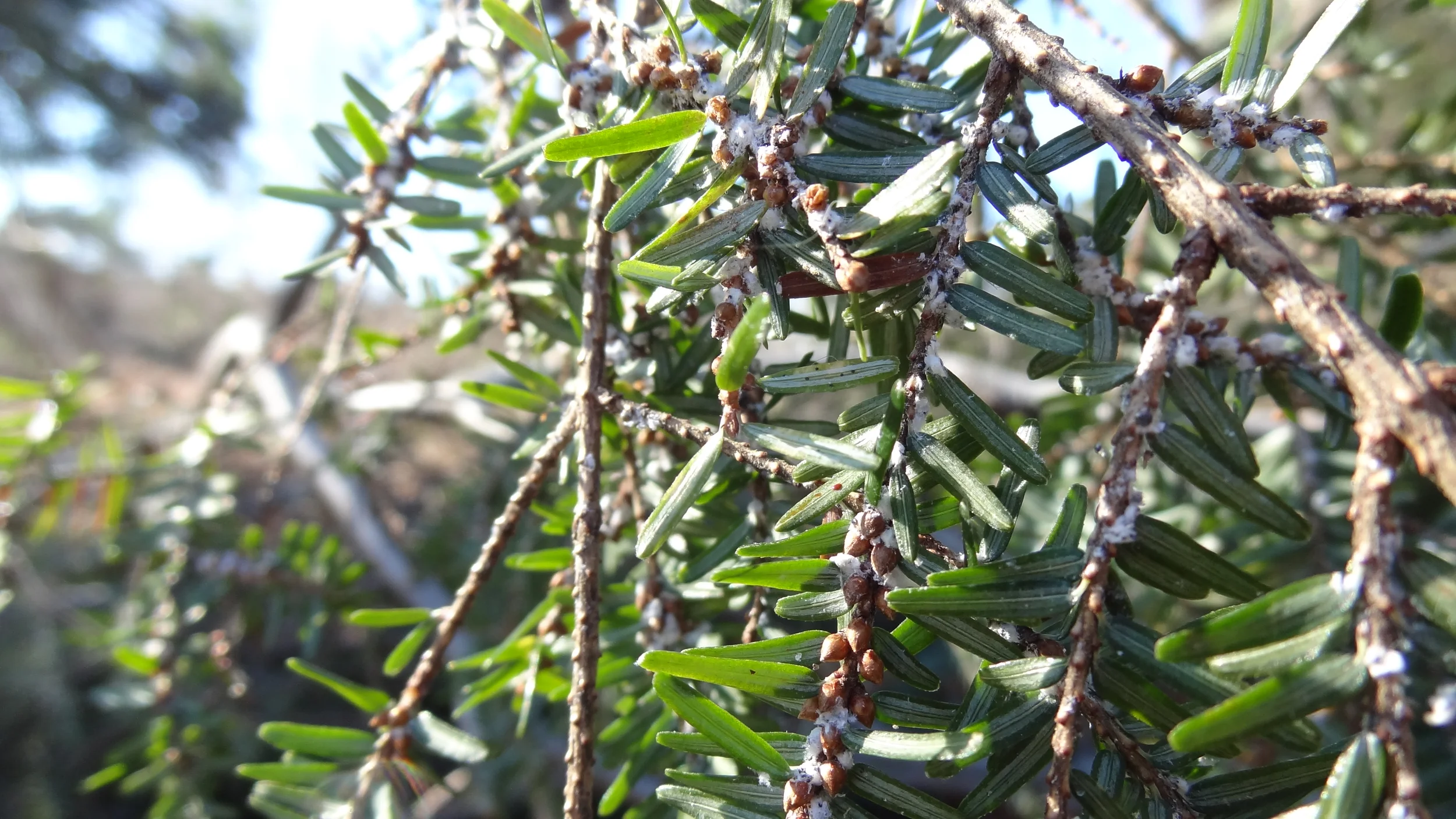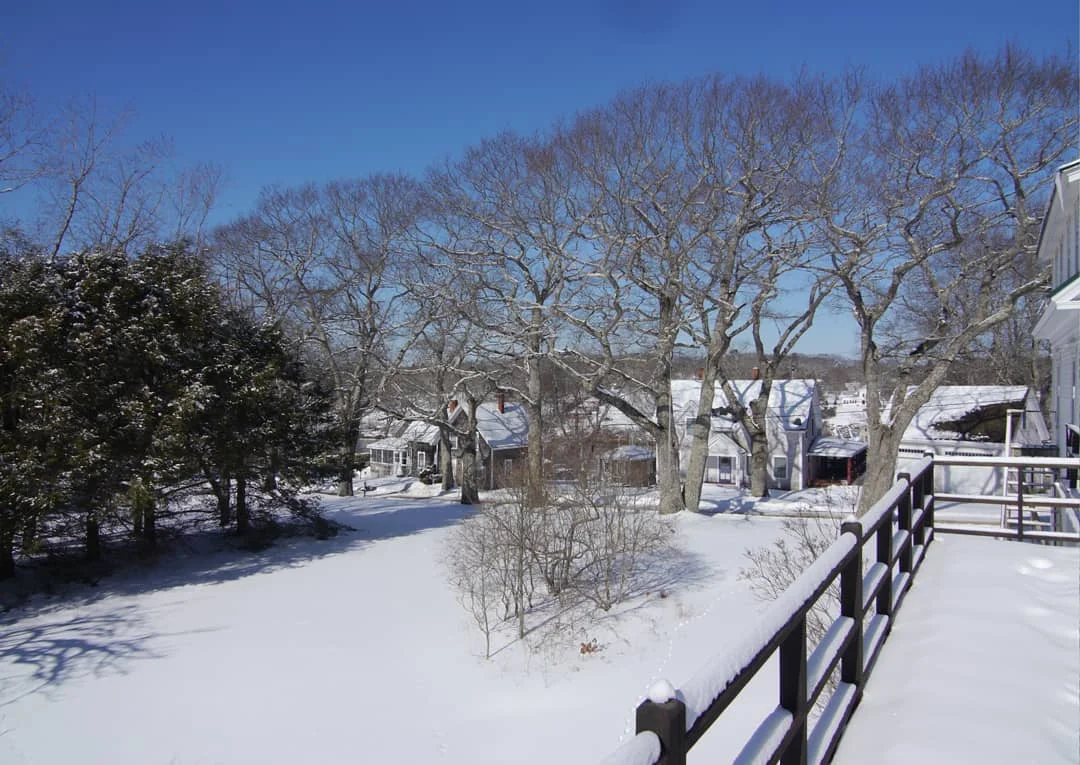Yesterday I clung to the trunk of a tree 25 feet up with a handsaw. It was awkward and difficult, but I was excited that Katherine had finally given in to my scheme. As I swayed up near the top of the tree though, I reflected on the sad irony of the situation.
Many years ago, someone who considers herself a witch asked me what kind of tree I associated with most. Whether or not the answer had any actual value, the question was asked and considered in all earnestness. The answer was clear. Hemlocks. I feel at home in a hemlock forest.
Recently Katherine, Theo, and I meandered down a paved path which wends its way for half a mile or so between the main drag in Topsham and some sort of generic medical office building. The path ran along a slowly deteriorating parking lot, then wound down between some grassy mounds spotted with deciduous trees. It was a bit more private, but still obviously suburbia. Around the next corner though, things changed. A stream cut a steep gully, and the banks were overhung with hemlocks. A chain-link fence kept pedestrians and their detritus out of the stream, but had I skirted the fence, I might have been wandering in the forest behind my house, or behind my friend's house. We might have been surrounded by suburbia, but this was the woods.
A hemlock forest casts a deep cool shade in the summer. That shade keeps the undergrowth down, leaving the forest floor free for wanderers. Hemlock needles don't poke and scrape at you like spruce needles do. And hemlocks don't usually smear you with pitch the way pines do. If you can reach the lower branches, an older hemlock is a great tree to climb. There are enough branches that you never find yourself out on a limb looking for a handhold or a foothold the way you might in an oak. A hemlock forest is a wonderful place to wander.

